| Title | Platform/Version | Time to Beat | Achiev % |
|---|---|---|---|
| Final Fantasy IV | PC (Pixel Remaster) | 20 Hours | 100% |
| Used Modifications: – Pixel Text Replacement – Playstation Button Replacement – 2x Speed modification (to assist in mindless grinding) |
Intro – a Whale of a Good Time
Final Fantasy IV was originally released in 1991 to both Japanese and English audiences on the new Super Nintendo Entertainment System. Due to FFII and FFIII being released only in Japan, Square made the decision to rename the localized version of FFIV in America to “Final Fantasy II”, a decision that was exacerbated when FFV would also not see a US release, causing FFVI to be renamed “Final Fantasy III” for American audiences. Due to this naming confusion, fans of the franchise often have to add clarification when talking about Final Fantasy II, III, IV, and VI to give clarity as to which game they are referring. For the sake of this review and all references going forward, I will always be referring to the games as their appropriate original Japanese title (an issue that was also fixed in the states with the localizations of FFII, FFIII, and FFV in the early 2000’s, and has been consistent since).


Despite the wonky naming issues, Final Fantasy IV was embraced in both Japan and around the rest of the world, often heralded as one of the most important video games of all time. Before this game, the very concept of dramatic storytelling was unheard of in console video games, and the leap to 16-bit not only enabled for better graphics, but also more processing power to deliver a look, feel, and sound that was all towards a singular vision. While FFI-FFIII all have a beginning, middle, and end, FFIV was truly the first game in the series to be a “complete package”, truly feeling like there were no concessions made during its development.
Whimsical vs Cinematic
FFIV is the first Whimsical entry that uses party members as actual characters with backstories, motivations, and significant speaking lines. While the story is much more fleshed out and the characters have actual growth arcs, this game still very much plays it fast and loose with the theming: we have to protect the crystals from the bad guys so that good can overcome evil. I will say though, that in this recent playthrough, I found myself appreciating some themes that are loosely hinted at and have come to acknowledge that this game has more depth than most give it credit. I’ll explain more in “The Story”.
The Story
Appreciating Final Fantasy IV is appreciating its themes. The game involves a cast of TWELVE playable characters who all join and leave the party at predetermined times. The only constant throughout is our main protagonist, whom we experience all of the events of the story through: Cecil.
The game opens with Cecil the Dark Knight, flying back to his hometown of Baron on the airship piloted by his military brigade: The Red Wings. We get a brief flashback showing how Cecil and the Red Wings were responsible for attacking the peaceful town of Mysidia to steal their crystal, an act that they carried out despite deep misgivings. Cecil is a soldier and does as his king demands, however it is clear that he and his men feel immense confusion and regret over the recent demands from their beloved king.
Upon returning, a dickbag bootlicker tattles on you to the king, causing the king to relieve you of your duties and instead send you on a weird quest to deliver a ring to a faraway village. Along the way, your good friend Kain stands up for you and as punishment from the king, is forced to go with you. This is fine by me because Kain is a legend in the series, being forever the figurehead of the Dragoon class and even gracing the logo of the game. On our way out of the castle, we also bump into Cid and Rosa, two more future party members who support Cecil and are also mystified by the King’s recent power-hungry attacks on the rest of the world.
Cecil and Kain make their way across the land and through a cave, fighting a mysterious “Mist Dragon” protecting the valley of the Village of Mist. Upon arriving in the village, the ring that Cecil was to deliver is revealed to be full of magical bombs which attack the town and set it ablaze. Yes, that’s correct, in the first 20 minutes or so of this game, after having attacked peaceful civilians of Mysidia, you then are tricked into committing what is ostensibly a suicide bombing terrorist attack on the helpless Village of Mist. And that’s not the worst of it:
You come across a girl in the flames who is sobbing over the corpse of her mother. But the mother didn’t die in the attack, no she died because of the death of the Mist Dragon in the cave along the way to the village. It turns out that the Village of Mist is a town of Summoners who have a link to their summons, dying if their summons are killed. This girl, Rydia, attacks you in an emotional rage and summons Titan, causing an earthquake and separating you from Kain, leaving you alone with the girl and all of the emotional weight of everything that has happened.
I don’t normally go into that much detail, however I wanted to convey exactly what kind of story this game was trying to tell and show how effectively it tells it. Thus far, we know that there are powerful countries in this world (Baron), and weak ones (Mysidia, Mist). We have been introduced to a society in which there are blatant victims who are suffering at the hands of an upper class that is power hungry and disconnected from the reality of these peoples lives. And we experience this through the eyes of someone stuck in the middle of it all. Cecil and his friends are painted as well-meaning people, but they are not without fault, and the regrets of their actions and their part in the state of the world is a core theme that is pervasive throughout.
Cecil doesn’t want to be these things. He wants to be better, he wants to help people, and more than anything else, he wants redemption for the atrocities he’s committed. He takes Rydia in under his wing, a plot device that is powerful if not explored as much as I would have liked. His guilt in being directly responsible for killing her mother is implied but unfortunately never really circled back on or offered any closure on.
As the story continues, we introduce the primary antagonist, a dark knight named Golbez, who it turns out has been pulling the strings in Baron and brainwashing people. Along the way, we meet a string of characters who all experience great loss and tragedy at the hands of Golbez, and at every step, Cecil is present. Golbez even turns Kain against the party TWICE with his brainwashing powers, which leads to even further ruminations on betrayal and regret between the party and Kain.
Towards the end of the first act, our ship is attacked by Leviathan and destroyed, causing the party to be separated and Cecil to wash up on the shores of… MYSIDIA. Cecil stumbles into the town and is met at every step with vitriol and fear. When he was last here, he was a conqueror, a tyrant. Now, Cecil has nothing. He is a traitor and deserter from Baron. His love, Rosa, is being held hostage by Golbez. Kain has betrayed him and is working for Golbez. Prince Edward and the Monk Yang are lost to the waves along with young Rydia… whom Cecil had kept safe ever since the attack in the Village of Mist.
Cecil talks to the elders of Mysidia and explains his plight, his misgivings, and how he wants to correct them. The main elder forgives Cecil and sends him on a quest of redemption to Mt. Ordeals.
This is the point where the game pivots from being a military drama into a traditional Final Fantasy game. Cecil overcomes the trials in Mt. Ordeals and changes into a Paladin, gaining a new prophecy heralding his journey to come. This is all well and good from a gameplay perspective, but I just wanted to point out how potent this moment is from a storytelling perspective. We get to experience forgiveness and growth alongside Cecil, and by changing his character model and class from Dark Knight to Paladin, he becomes born anew. With conviction and redemption in hand, Cecil begins again a path to right wrongs and save the world.
The story takes some twists and turns, we explore an underground world, the massive Tower of Babel (which extends from the underground to the skies above the overworld) and then eventually, we ride “The Lunar Whale” which is a mega airship/spaceship shaped… like a whale…that takes us through space to the Moon for the game’s epic final act.
I’m not going to spoil everything here, because this game is so important historically and definitely still worth playing even today. Obviously, the video game medium has come a long way since 1991 and this story feels very tame compared to some of the complex storytelling of later games in the series, but it’s still iconic and I found myself invested throughout.
The Gameplay
This section is going to be pretty light, as this game really played it very safe from a gameplay perspective. Following FFIII, you’d think this game would have evolved the job system even further and continued to add player agency. However, the exact opposite occurred. FFIV is quite possibly the most limiting and restrictive of all FF games when it comes to character customization. You have zero choice in the members of your party, their classes, the spells that they know, the weapons they can use, how their stats develop, etc. Everything is hard-coded and set in stone, which, while frustrating for me as I’m someone who likes player expression in his games, I also acknowledge that the game and the story beats were all so intertwined with the gameplay design that the game wouldn’t have been the same had there been more customization available.
For example, Cecil must be a Dark Knight for story reasons in the start of the game, to make his job change to Paladin (also for story reasons) impactful. This wouldn’t land nearly as well if you had been playing your Cecil as a black mage, or an archer. Same with Tellah and his use of Meteor, and Edward the Bard and his harp (which has very important storyline implications). Rydia being a summoner is a part of her CULTURE, her mother died at your hands BECAUSE she was a summoner! It would feel so weird to change Rydia into a Berserker and equip her with an axe hahaha. That all being said, I did want to point out the two most important innovations in the gameplay for this game.
First, the Active Time Battle (ATB) system. Simply put, this is the first game wherein they finally ditched the D&D style “initiative” system, and instead all combatants in battle have a meter that fills depending on their characters speed and weight stat. Once the bar fills, the character can act. This was R E V O L U T I O N A R Y, and became the defacto combat system for not just the FF series, but pretty much all JRPGs until 2001’s Final Fantasy X(!).
The second gameplay change was that FFIV features 5 party slots instead of the usual 4. Additionally, in other games of the franchise, you can set each slot to be “front” or “rear” independently. Characters in the front do full melee damage, but also suffer full melee damage from enemies. Characters in the rear do half melee damage, but suffer only half melee damage from enemies. Usually this choice is binary and dependent on the job of each character (archers and spellcasters in the rear since their magic and range isn’t penalized, so that they take less damage from monsters).
In FFIV, the five party slots are ALWAYS alternating between “front” or “rear”. You can swap them, however this swaps ALL rows. This means that there are only two configurations: “RFRFR” (3 rear, 2 front) or “FRFRF” (3 front, 2 rear), and with the games cast of 12 playable characters constantly entering and exiting your party, it’s often frustrating to manage who is in which slot. Luckily, the designers acknowledged this issue and this would be the last game that enforced rules around who could be in the “front” and “rear”.
Extras & Achievements
This game has a few extra items for a completionist to seek out, such as the optional summons of Odin, Leviathan, Ashura, and Bahamut. Additionally, the final dungeon does the same thing FFIII did, with having a string of optional super boss encounters that give you the best gear in the game if you complete them.
That being said, all of these were easy, and it would turn out that the most difficult “achievement” in the game for me was farming for a Pink Tail. The best armor in the game, the Adamant Armor can only be received by trading in a “Pink Tail” item, which is a 1/64 drop from an enemy known as the Flan Princess that only has a 1/64 chance to spawn in ONE room of the final dungeon. For the purposes of my completing of these games, I am using guides to ensure I’m not missing any optional content, and this is the first one that I truly wouldn’t have been able to get without a guide. I did use the strategy of using the “Siren” item which forces the fight with Flan Princesses, but even with a stack of 99 Sirens, with 5 Flan Princesses per encounter, I still only got ONE Pink Tail, and this was after using 70 Sirens (A total of 350 Flan Princesses). This grind added about 3 hours to my runtime on this title, but it could have been much worse. This kind of “extra” content is the absolute worst, its method of obtaining is so obtuse and feels out of place with the rest of a game that otherwise felt well designed and put together.

Final Fantasy Staples Introduced
(Please note that this is not supposed to be an exhaustive list, just those things that I personally noticed and took note of during my playthrough)
- First appearance of the Jobs:
- While the earlier games used Knight as a white-magic casting fighter, this is the first game that explicitly uses the Paladin job.
- First time a flashback cutscene is used
- First time that the main characters are given predetermined names. (Can technically change the names later on using the NPC “Namingway” but this is entirely optional and never prompted or expected for the player)
- First use of the Active Time Battle (ATB) system (!!!!)
- First game to use a five-character party
- First game that has save points in dungeons. Previously, saving could only be done on the world map.
- First time there’s a non-airship vehicle (hovercraft)
- First time you can fly on a Chocobo (Black Chocobo)
- First time traveling underground
- First time traveling to Space/Moon
- First appearance of staple magic:
- While Meteor existed in FF3, it gets little fanfare and isn’t really feasible to use. This game is the first time that Meteor was built up as “special” magic.
- First appearance of staple monsters:
- The Magus Sisters (Iconic boss and later summon)
- Demon Wall(!!!)
- First appearance of staple items:
- Gold Hairpin
- Minerva armor
Final Thoughts & Score
Final Fantasy IV is a historically significant JRPG that tells a simple story with heavy themes of loss and regret. While the depth and exploration of these themes is lacking compared with the nuanced narratives told in games today, it was still well ahead of its time and is a bookmark in the history of JRPGs and video games as a whole. The stakes may not be as high as they seem, the world as developed as implied, or the characters as robust as hinted, yet somehow this game still pulls it all together to make something that is more than the sum of its parts. A true classic!













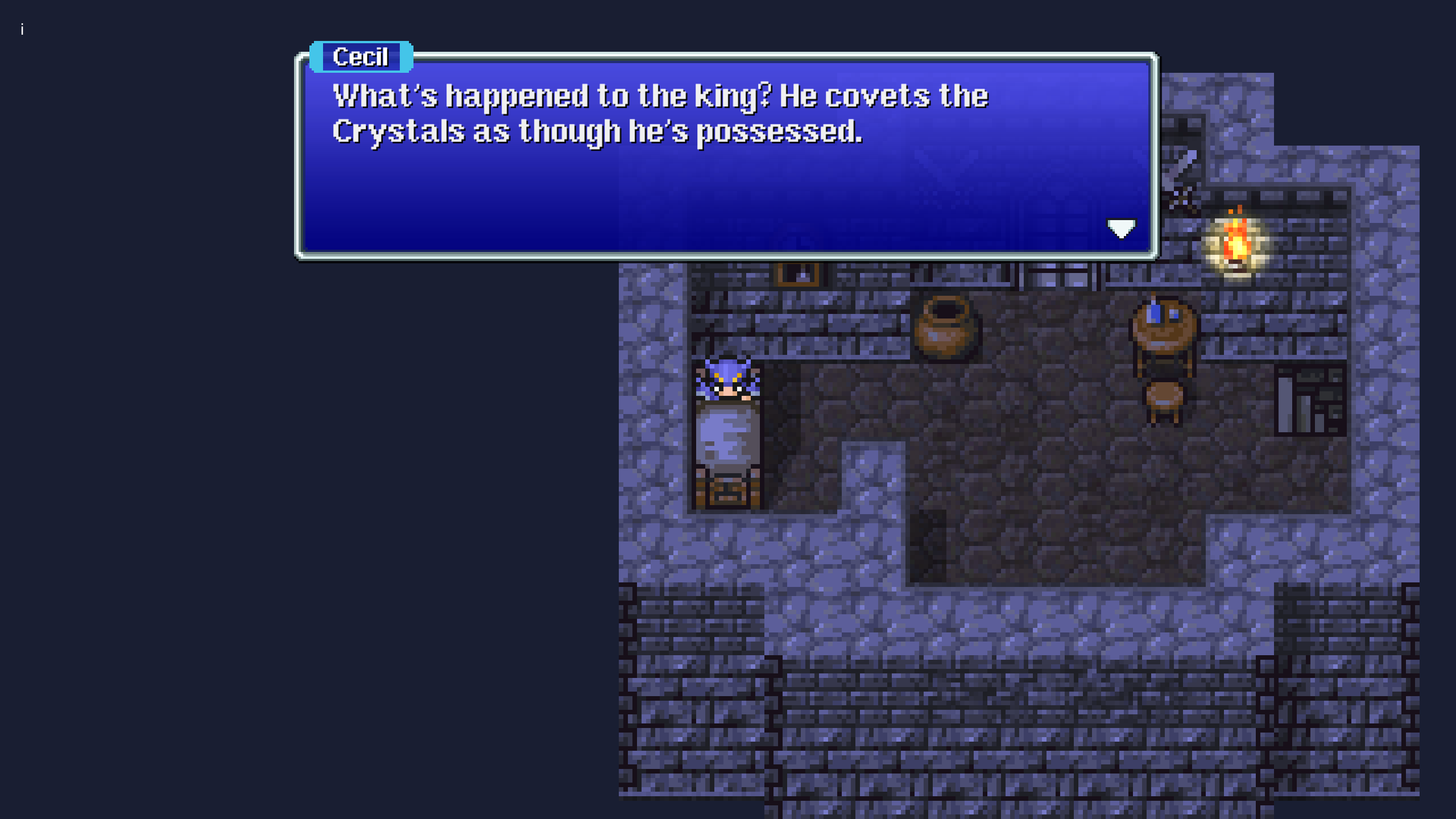































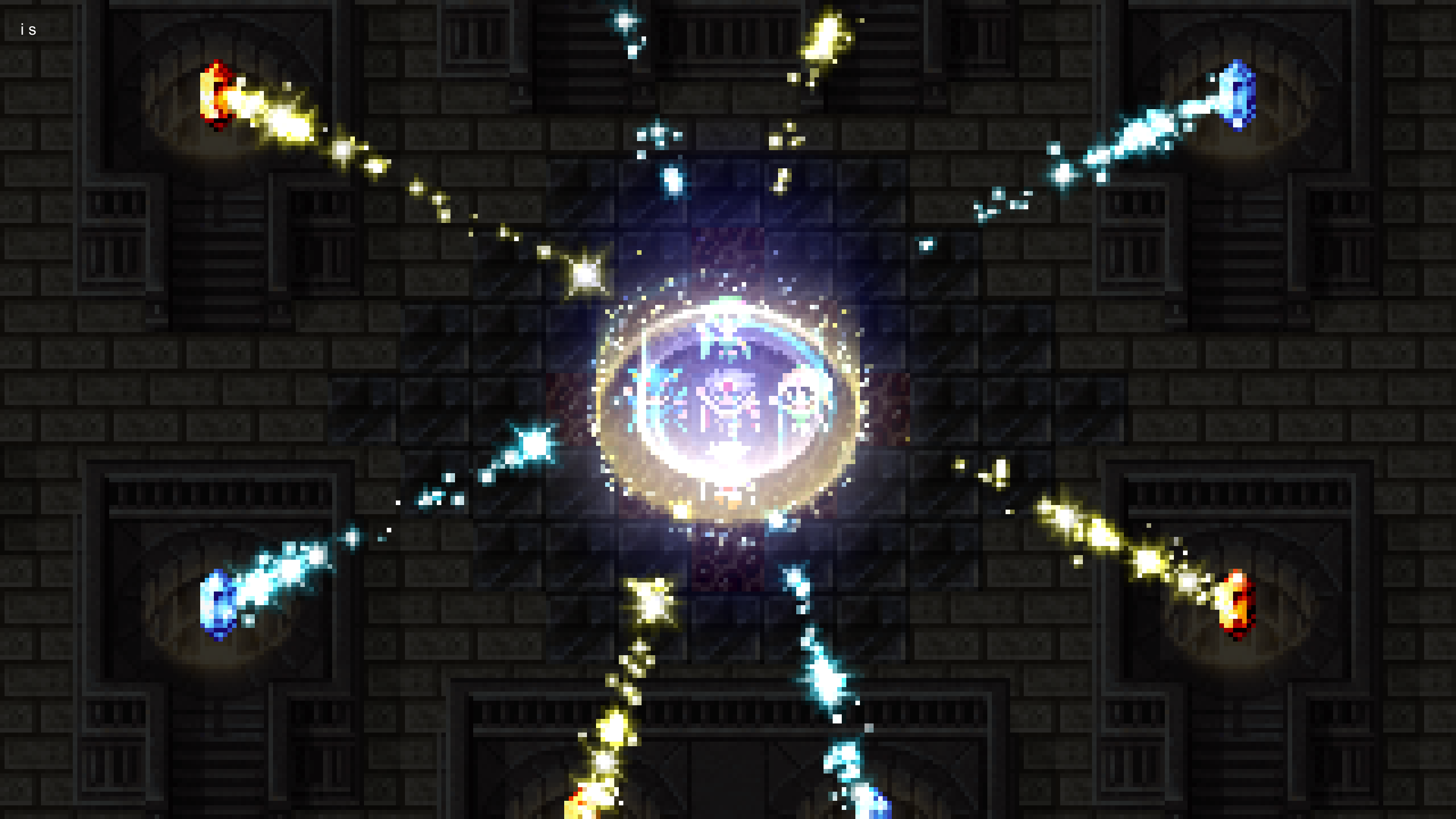



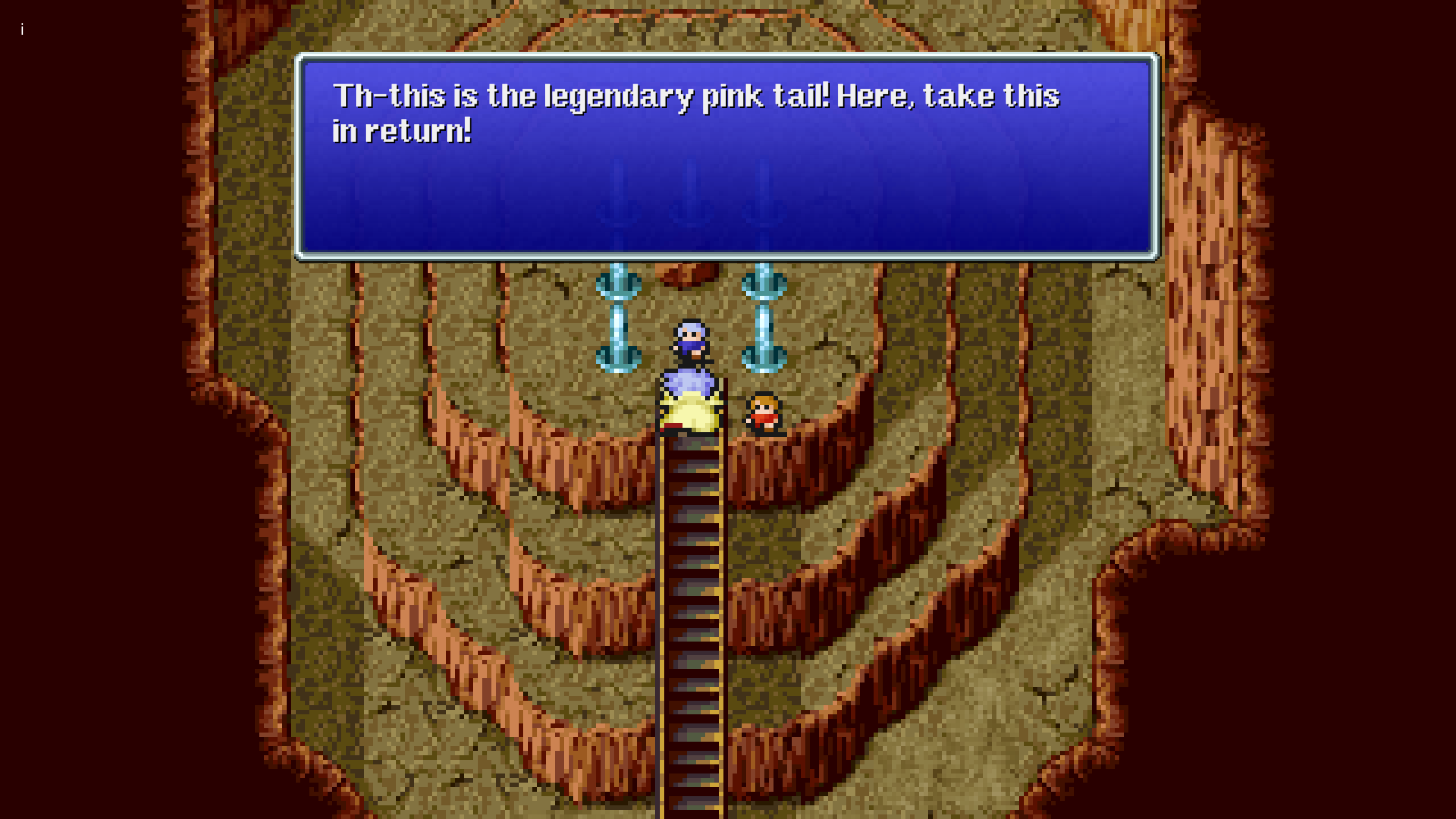
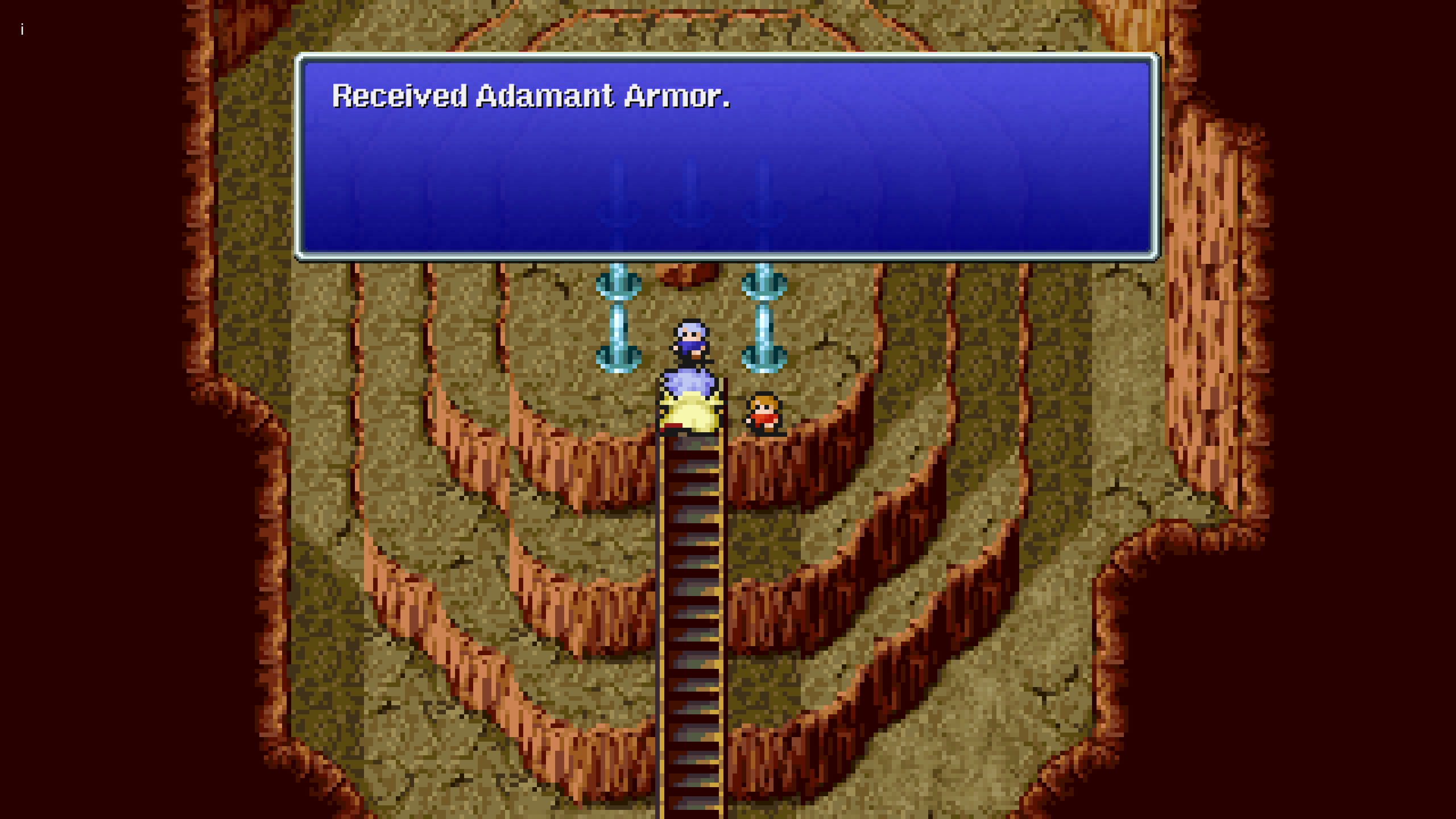

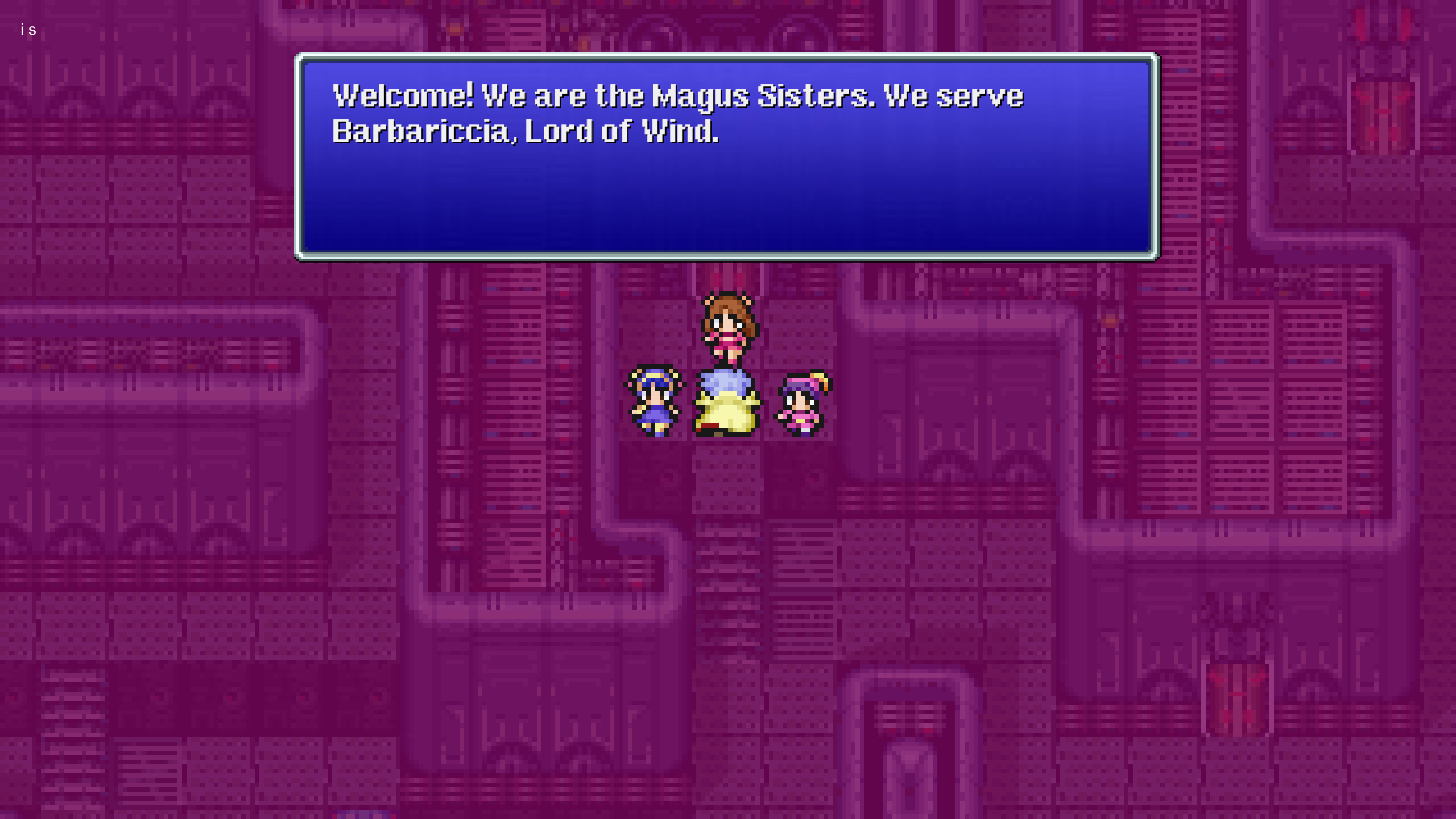

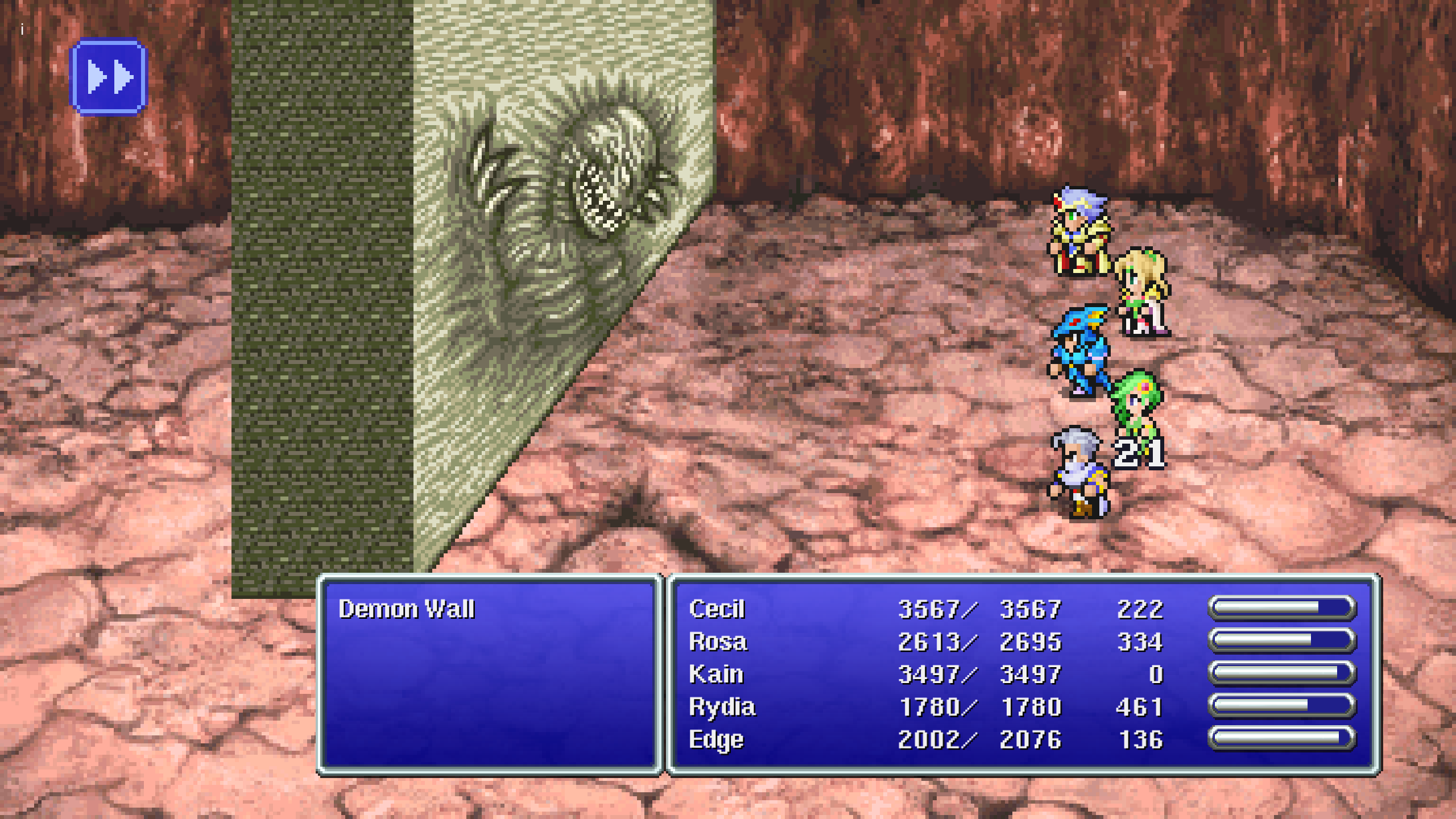















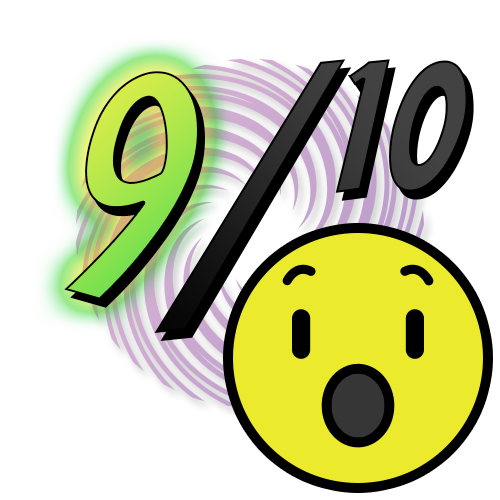



Leave a Reply